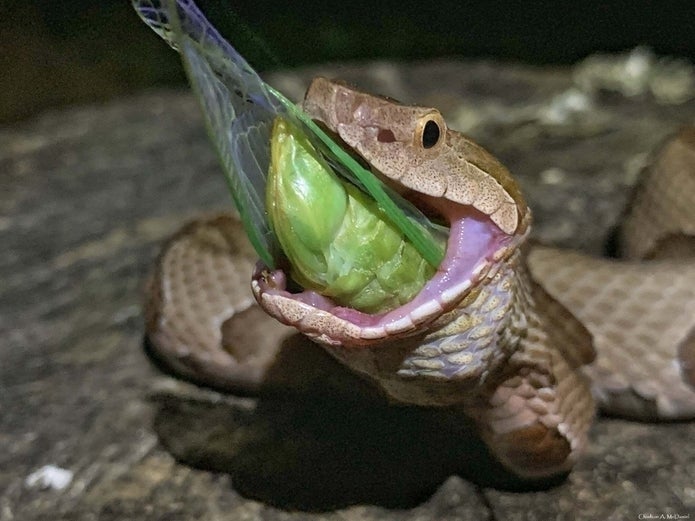Cicadas Serve As “Fast Food” For Copperheads During Rare 17yr Emergence
by Ethan Gilardi, Wildlife Biologist

KKkzzzzZZZzzzZZZZzzzzZZZzzzzzZZZZzzzZzzZzzzzzzzZZZzzzzZZZZzzzzzzz!
This year marks the long expected return of Brood X, the periodical cicadas found in New Jersey and other northern states. Also know as The Great Eastern Brood, these cicadas emerge from the ground every 17 years in order to molt their skin and emerge into their adult forms to attract mates with their signature droning “BUZZ.” Once eggs are laid, the adult die off, leaving their young to hatch and burrow into the ground where they’ll wait another 17 years to start the process all over again.
The brood emerging this year first burrowed into the ground in 2004, making this species of cicada one of the longest lived insect species!
Not everyone is excited to have these large insects, which can number in the billions, buzzing about, but they’re a favorite snack of an unlikely New Jersey resident: COPPERHEADS.
Many species of wildlife take advantage of these cicada swarms by eating the insects and their shed skin, which serve as a rich source of easy protein. However, you might not have thought snakes like NJ’s copperhead would get in on the party, too!
Tom Davis of patch.com recently wrote about this interesting phenomenon, citing CWF’s wildlife guide!
Check out his article to learn more about Brood X, the cicada lifecycle, and how an unlikely reptile takes advantage of this 17 year phenomenon.
Discover more from Conserve Wildlife Foundation of NJ
Subscribe to get the latest posts sent to your email.